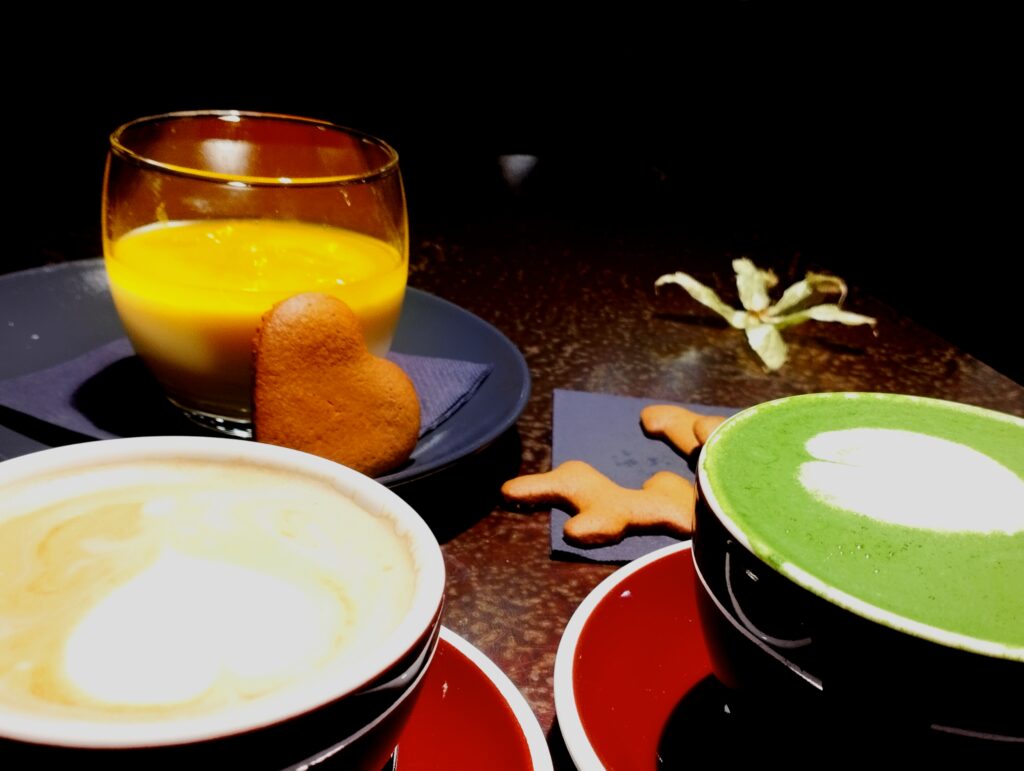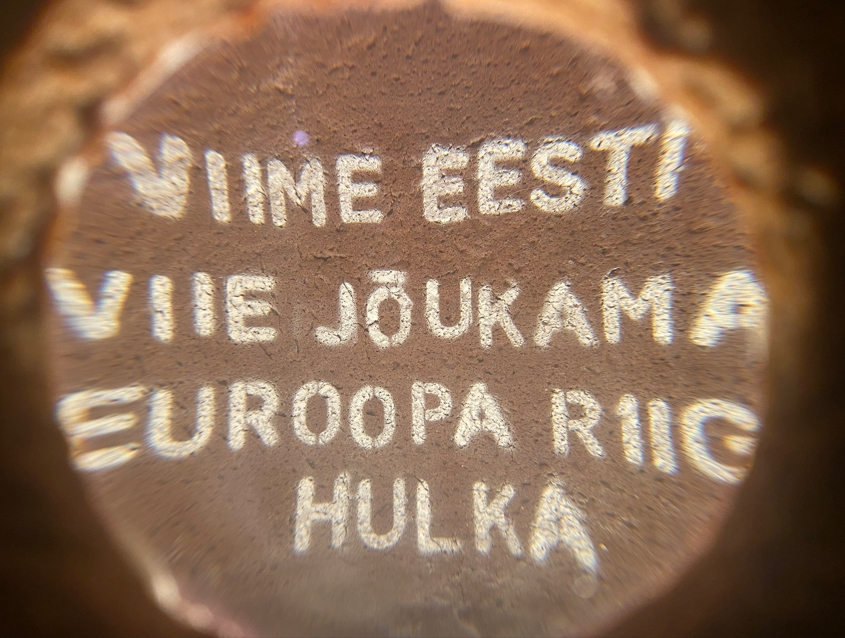
Every December, Tallinn transforms into a winter wonderland filled with the scent of spiced gingerbread, but few events capture the imagination quite like PiparkoogiMaania. The name PiparkoogiMaania combines the Estonian words piparkook (gingerbread) and maania (mania or obsession), reflecting the creators' passion for this unique art form.
The tradition of making gingerbread dates back to medieval Europe. Originally, gingerbread was made by monks in the eleventh century, with the earliest recipes coming from monasteries in Germany. The combination of spices like ginger, cinnamon, and cloves, along with honey and molasses, gave the dough its distinct, warm flavour. Ginger itself was prized for its medicinal properties and long shelf life, making it an ideal ingredient for wintertime treats.

By the sixteenth century, gingerbread-making had spread across Europe, becoming particularly popular in Germany, where the famous lebkuchen was born. Gingerbread became a staple of Christmas traditions due to its festive aroma, intricate designs, and ability to be shaped into elaborate forms like houses and figurines. The iconic gingerbread house gained popularity after the Brothers Grimm published Hansel and Gretel, forever linking the treat to magical, fairytale-like worlds.

Here in Tallinn, gingerbread has evolved into something beyond a seasonal treat—it has become a form of art. To learn more about how this magical transformation happened, I spoke with PiparkoogiMaania’s founders, Mari-Liis Laanemaa and Pelle Kalmo. This year’s theme, “Fairytales”, invites visitors into a world where stories are crafted from gingerbread dough, turning an ancient tradition into something creative, meaningful, and delicious.

How did the idea for PiparkoogiMaania originate?
Mari-Liis Laanemaa: The idea was born from my childhood experiences of creating gingerbread art with my family. Gingerbread cookies were cut from the dough with a knife freehand and decorated creatively. This started the dream of making an exhibition with gingerbread made by Estonian artists. It became a reality by chance when Pelle and I participated in events organized by Space is Not Empty, a group of artists and designers united by an ecologically-friendly approach to design. The group actively held exhibitions between 2003 and 2006. I was asked to curate one of their December events, and since it was scheduled for December, I felt that it was the right time to make a long-standing dream come true. All the group’s designers and textile artists were tasked with making their works from a new material—gingerbread dough.
What inspired the focus on gingerbread as an artistic medium?
Pelle Kalmo: Gingerbread is a versatile material that allows for both artistic expression and playfulness. Its deep connection to Christmas traditions makes it especially appealing for an exhibition that merges art and the festive joy of the holiday season.

This year’s exhibition theme is “Fairytales.” How do you select a new theme each year?
ML: The choice of theme is very important. It must inspire the artists to create, while leaving enough room for interpretation. At the same time, it must bring a sense of unity to the exhibition. Our themes are deliberately broad, allowing each artist to approach them in their own way. Naturally, this year’s exhibition includes works inspired by internationally-known fairytales such as Sleeping Beauty (Okasroosike), Snow White, and Jack and the Beanstalk. Alongside these, there are creations based on classic Estonian fairytales and even contemporary interpretations that connect the theme to Estonian politics.

How many artists are involved this year and how do you select them?
PK: This year, 114 artists participated in the creation of the exhibition’s works. Most of them are representatives of various creative fields who studied at the Estonian Academy of Arts. Only a few are professional chefs. Over the years, gingerbread fans from other areas have also found their way to us. For example, we organized a gingerbread photo contest for many years, whose winners were also invited to participate in the exhibition.
…it often happens that grandmothers, parents, and kids from several generations come to see the exhibition together. For many, it has become a beloved Christmas season tradition.
(Pelle Kalmo)
ML: Artists’ children and families also frequently participate in the creation of works. The most important quality of the exhibition’s participants is creativity. Manual dexterity is essential, as gingerbread dough is a challenging material to work with. An interest in baking is always a helpful quality.
Who is the primary audience of PiparkoogiMaania?
PK: It’s hard to say, but probably our biggest fans are little kids. We’ve been organizing the exhibition for nineteen years, and many of the children who visited us back then have become parents themselves. So now, it often happens that grandmothers, parents, and kids from several generations come to see the exhibition together. For many, it has become a beloved Christmas season tradition.

How has visitor feedback shaped the exhibition?
ML:Visitor feedback is what motivates us to create the exhibition again and again each Christmas season. In fact, the tradition of the event started thanks to the feedback of visitors, who insisted that it should take place for a second year, even though it was originally meant to be a one-off project. During the Covid pandemic, the exhibition was almost cancelled due to restrictions on organizing large events, but the strong desire of both viewers and artists to maintain continuity made it possible to keep it going.
Gingerbread can be shaped and crafted in countless ways—imagination is the key to creating something truly unique. And if an experiment doesn’t turn out as planned, the gingerbread can always be eaten!
(Mari-Liis Laanemaa)
PK:Creativity has always been at the heart of PiparkoogiMaania, and visitor feedback keeps that creative energy alive. Knowing that children and young people are excited to see what new artistic ideas we bring each year inspires us to push the boundaries of what can be created from gingerbread. Their curiosity and enthusiasm remind us that art is about exploration and play, which motivates us to keep the exhibition fresh and imaginative.
What kinds of workshops can visitors participate in during the exhibition?
ML: On the lower floor of the exhibition space, workshops are held in our kitchen, guided by participating artists. There, we explore the long and noble history of gingerbread-making and its rich traditions. We also introduce creative baking and decorating techniques inspired by this year’s theme. Gingerbread can be shaped and crafted in countless ways—imagination is the key to creating something truly unique. And if an experiment doesn’t turn out as planned, the gingerbread can always be eaten!

Who typically participates in these workshops?
PK: In the mornings, our workshops are filled with the excited chatter of schoolchildren coming with their classes, ready to learn and create. In the evenings, the atmosphere transforms as work teams and groups of friends gather to relax, have fun, and explore their creative sides together. It’s a space where all ages can experience the joy of making something unique—and delicious!
The tradition of gingerbread-making at Christmas is well-known in many countries. What sets PiparkoogiMaania apart and makes it special?
ML: There are many gingerbread exhibitions around the world, but what makes the PiparkoogiMaania project unique is that it’s not just about displaying festive creations, it’s about art—gingerbread art. Our works are created by artists, giving each piece a deeper meaning and artistic dimension. We don’t simply showcase something colourful and edible; behind every creation lies a concept or message that the artist wants to convey to the viewer.
Each creation tells a story, turning gingerbread from a holiday treat into a meaningful art form. For example, this year’s exhibition includes a political artwork inspired by the parliamentary elections held fifteen years ago…
(Pelle Kalmo)
PK: We know that in Sweden and England, architects and designers organize exhibitions of gingerbread houses. However, at PiparkoogiMaania, you’ll find works that explore deeper themes—if you take the time to look beyond the surface. Each creation tells a story, turning gingerbread from a holiday treat into a meaningful art form. For example, this year’s exhibition includes a political artwork inspired by the parliamentary elections held fifteen years ago, when one party promised to make Estonia one of the five richest countries in Europe within that time frame. Since this promise never materialized, the artist interpreted it as a “political fairytale.” The work consists of a gingerbread box with a peephole; when you look inside, you see the broken election promise illustrated in gingerbread.

How do you see PiparkoogiMaania evolving in the future?
ML: We value tradition and stability. Our goal is to keep alive and honour the centuries-old traditions of gingerbread-making. We’ve built strong connections with countries where these skills are highly valued, such as Poland, Hungary, and the Czech Republic. We hope to continue fostering these international ties.
PK: Next year, we plan to establish contacts with Germany and introduce our visitors to its gingerbread-making traditions, which, interestingly, have historical links to Estonia. While preserving old customs, we’re always open to developing new ones by incorporating modern ideas and techniques.
What guides your choice of international partners?
ML: When choosing cooperation partners, we were inspired by the long-standing gingerbread traditions of those countries. Gingerbread has been made in Germany, Poland, the Czech Republic, and Hungary for hundreds of years. While these traditions differ from Estonia’s, they share a similar artistic spirit, as well as the same passion and dedication to craftsmanship. Our collaboration is mutually enriching; we learn from their historical practices, and they, in turn, discover our creative and contemporary approach.
Jerry Mercury, Tallinn, 2024




